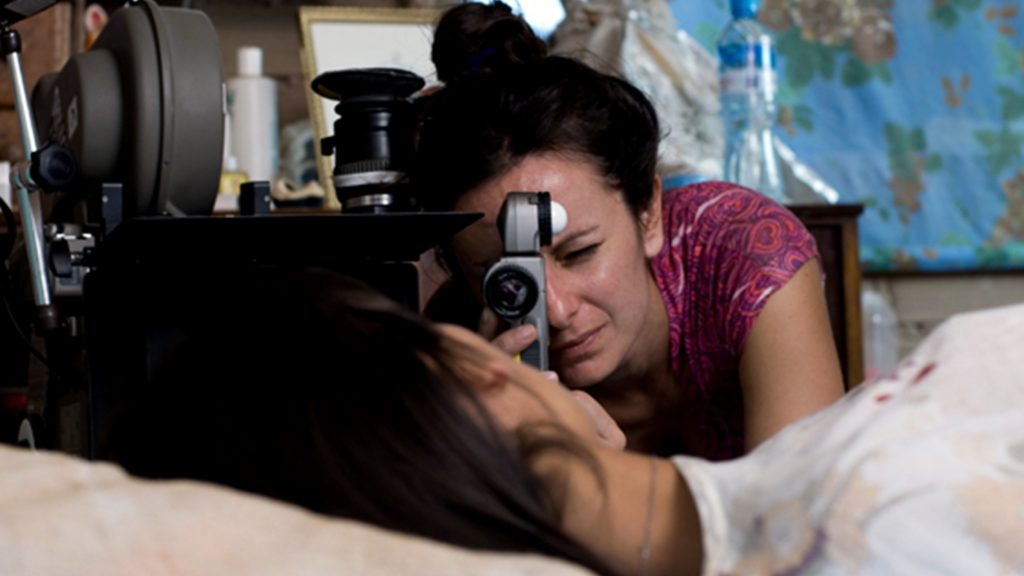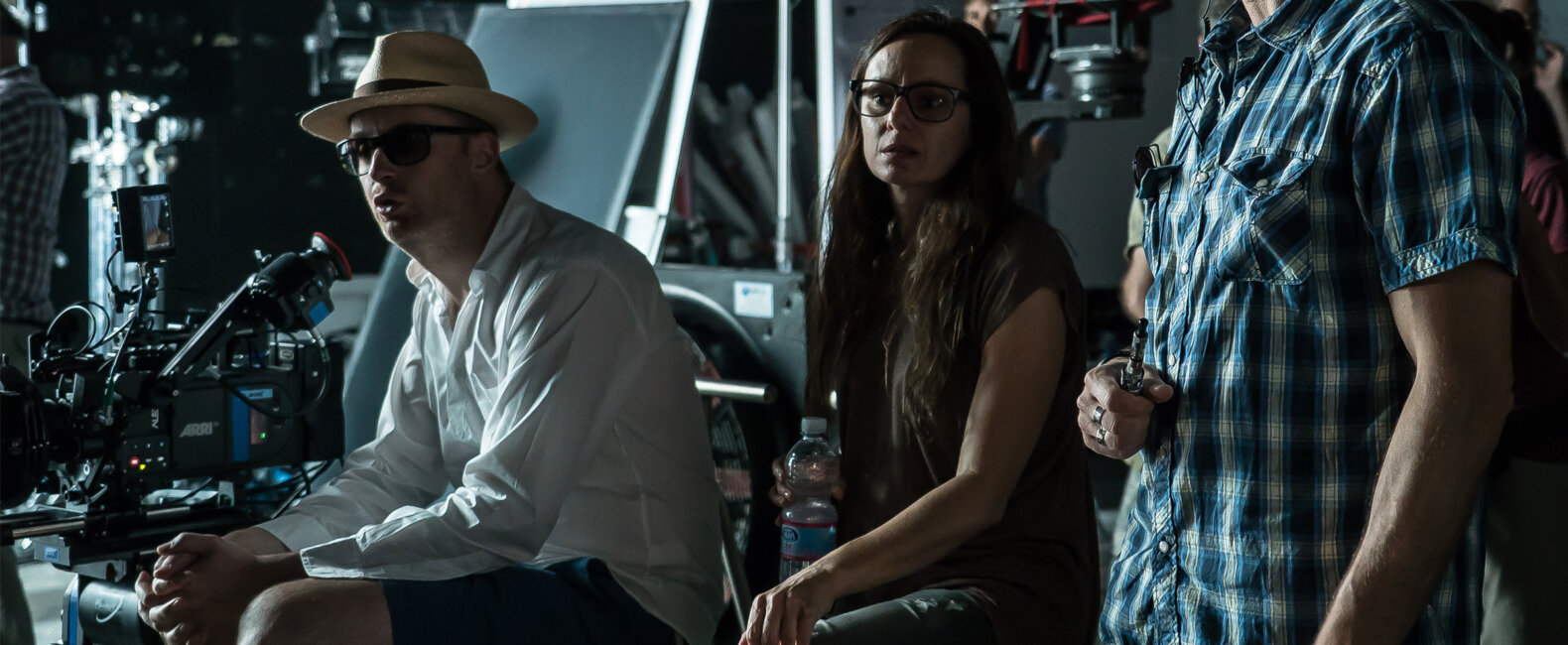Natasha Braier always knew what she wanted to do; she just wasn’t sure where she wanted to do it. While growing up in Argentina, she became interested in photography at a young age and soon began making films with her father’s 8mm camera. “I never really thought about filmmaking as a career. I was just following an artistic expression that resonated with me the most,” Natasha told us. After attending art school in Argentina and film school in Barcelona, she was eventually accepted into a master’s program for cinematography at the prestigious National Film and Television School in England.
Natasha’s impressive career as a director of photography includes about a dozen feature films, twice as many shorts, and countless commercials ⎯ not to mention music videos for artists such as David Byrne, Guy Pearce, and most recently Rihanna. And her latest feature is a collaboration with Drive director Nicolas Winding Refn.
While Natasha now lives in L.A., her work takes her all over the world shooting films in places like France (In the City of Sylvia), Peru (Academy Award–nominated The Milk of Sorrow), and Australia (The Rover), to name just a few. We recently chatted with Natasha about being picky when choosing a project, finding allies on set, and the “golden triangle” of filmmaking. Here’s Natasha.

Did you always want to be a filmmaker?
The philosophy in my house growing up was that the most important thing in life was to find out what you love to do and then do that for a living. Still, I never thought about filmmaking as a career. I was just following an artistic expression that resonated with me the most. That was photography at first. But when I discovered film, I knew that’s what I wanted to pursue.
You went to school for film?
I went to a few different schools, but ultimately I spent three years getting a master’s degree in cinematography from the National Film and Television School in England. I did a lot of short films during those three years, and I continued doing short films after I left. Most were freebies, but then I started getting paid. I was lucky to get the best agent in town right out of film school. Then I slowly built to bigger things.
Did you know film would be your ticket to see the world?
I had no idea there was so much travel involved ⎯ that I was going to be a world gypsy. The traveling was great in my twenties and thirties. It was exciting. I had access to so many situations and cultures and places that I otherwise never would have seen. I’m deeply grateful for that because you end up growing not just as an artist, but as a person too.
But now that I’m over forty, I get tired of being on planes all the time. I get tired of traveling so much and spending so little time in my house. I get tired of not having a simple routine like most people do. But that’s the price you pay for an exciting life. You can’t have it all.

If I don’t believe in something and I’m not passionate about something, I don’t know how to do it.
What’s your pre-production process?
Every project is different. At the beginning I try to absorb as much information as possible from the director. I try to understand the essence of every moment. Sometimes that means going through the whole script together, asking a lot of questions, and rewriting things based on the answers to those questions. For example, there are a thousand ways you could film a person grabbing a glass of water. The only way for me to find the rightway is by understanding why the director wants to, for instance, show a person grabbing a glass of water at this particular moment in the film. So there is a lot of script analysis. There are a lot of conversations about the character’s personal life and work. And all of that helps me decide what kinds of tools we’ll need and how, as a cinematographer, we’re going to get these ideas across.
When did you start being picky about the projects you take?
I have always been picky. Even in film school with my short films, I only took the projects that I connected with. I don’t know how to work any other way. If I don’t believe in something or I’m not passionate about something, then I don’t know how to do it. I’ve done commercials for money, of course, but those projects simply allow me to do the films I really love to do. I do like one film a year. Some years I’ll maybe do two. Some years I don’t make any films. But even on the commercial side, I’m a little bit picky.
Do you prefer directors with a strong, specific vision? Or do you prefer to be more collaborative?
I work with directors who have a strong vision. But they choose me because they’re interested in my vision, in what I can bring to the project. For the collaboration to be interesting, we both have to be strong. I’m not very interested in directors who don’t have a strong vision. I need them to know why they are telling that story and exactly what they want to say in every scene. Then we can work together to translate that visually.

I really love my work, and I don’t see it as a stepping-stone to directing. I feel like this is my place. This is what I love.
Who becomes your biggest ally on set?
It depends. The gaffer and the key grip are always key players on my team. In terms of other department heads, the production designer is super important. When that collaboration works ⎯ between the director, the production designer, and the cinematographer ⎯ you get that “golden triangle” where everyone is feeding off each other. It’s amazing.
Do you have any interest in directing?
I really love my work, and I don’t see it as a stepping-stone to directing. I feel like this is my place. This is what I love.
Do you still get to operate your own camera on larger productions?
I love to operate my camera. But because my last few movies were bigger productions, the union sometimes forced me to use an operator instead. At the beginning, it was very unnatural for me. I was very resistant. I felt like I was losing part of my work ⎯ a part that I love. But I told myself I had to embrace it. And I have to say that I actually saw a lot of positive things about it, especially now that I’m shooting digital and need to be by the monitor. If I were operating the camera, I’d have to be in two places at the same time, which becomes quite demanding. But when I have an operator, I can be with the director a lot more, thinking about the overall movie, the mise en scène. And I can spend more time on small lighting details. So I’ve learned to embrace it. And if you find the right operator, it’s great to have an extra pair of eyes.
So have you come to embrace digital filmmaking?
I can’t say that I like it. I just have to accept it. If I could choose, I’d still shoot on film.

With digital, you get a lot more leeway with the image in post. Do you ever worry that colorists will manipulate your images in ways you wouldn’t choose?
Cinematographers definitely have a lot less control now. Fifty percent of your work can totally be changed in the grade. Usually we’re paid for only one week of color grade, and you can’t really choose when that week will be. You might be busy doing another movie. I’ve turned down new projects because I wanted to make sure I was available for the color grading of my last movie. It’s tricky to navigate, and it’s a very frustrating issue for cinematographers. During a recent International Cinematography Summit organized by the American Society of Cinematographers (ASC), we were talking a lot about this. We’re trying to find ways to make sure we can be there to complete our work.
What do you hope audiences will take away from your films?
I like to make films that people keep thinking about after they’ve watched them. An interesting recent example is The Neon Demon. It has polarized a lot of people. Some people hate it, and yet they’re writing five-page essays on the internet about it. I’m like, “If you hate it so much, then why did you take a whole day to write this essay in your blog, with photos and illustrations, trying to figure out why we did that?” And then of course there are people who totally love it. They’ve seen it five times already and tattooed their arms. But whatever. People are thinking about it and arguing about it. Everyone has different opinions, but they are somehow touched by it. It’s not a film they saw and forgot the next day.
How do you gauge the success of a project?
For me, what makes a successful project is choosing the right project. It’s all about the process. It needs to feel like a journey, like I’m going on a trip to a new place where I’m going to learn and have adventures and be insecure and find things and take risks. Where I’m going to be doing something dangerous, but I’m going to be brave and just go for it. If I make the right decisions, I know I’ll come out of it with something I’m proud of. I don’t care so much about success at the box office. I just care about creating meaningful, moving pieces of art that make people feel and think.
Interview by Noah Taylor

















































































